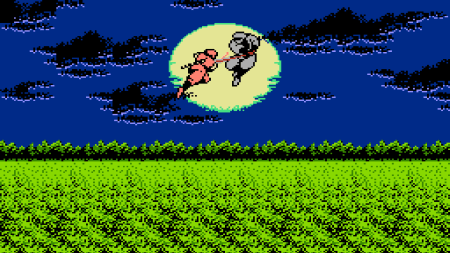Time is an important part of human existence, albeit one that can easily go unnoticed or unremarked-upon. It follows, therefore, that videogames, in trying to embody simulations of functioning worlds, would be equally ruled by this omnipresent force. In early videogames, a sense of the passage of time sometimes takes the form of the “time limit,” resulting in player death upon expiration, or else is hard-coded into the environment: this level takes place in the morning, the next takes place at noon, the next at sunset, etc. etc. etc. Less often, and particularly in games that try to simulate complete worlds, the passage of time is represented in its entirety, though usually at a truncated rate. At the very least, if a virtual world or sequence of levels does not try to convey a passage of time, they at least give a sense of events occurring at a time.

This scene from Ninja Gaiden uses its representation of the environment to illustrate the events occurring at a specific time.
As technologies have increased in power and videogames have increased in sophistication, these approaches toward showing the passage of time have remained largely unchanged. What is rather more interesting is the way these virtual worlds show the passage of time in relation to our own reality. When a player plays a video game, they experience two time states at once, their own and that of the game world, and these two states may not be congruent with one another. Videogames must necessarily abandon the specifics of time, or else encounter problems in presenting a coherent game experience. Batman: Arkham City demonstrates this fact of game design in a number of ways.
